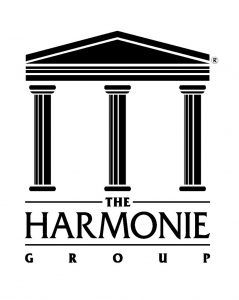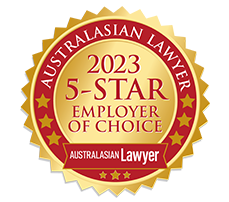Limelight Articles
Joinder of insurers to proceedings by a non-party to a policy of insurance
CGU Insurance Limited v Blakeley [2016] HCA 2
Introduction
On 11 February 2016, in a decision that will be of significance to all general insurers, the High Court determined that a non-party to a policy of insurance can join and seek direct relief against an insurer, provided it has a sufficient interest to do so.
Following this decision, occasions on which a non-party has a sufficient interest will include where:
- the insured is insolvent; and
- indemnity has been declined and is unlikely to be challenged by the insured.
Insurers can therefore now expect to be joined to proceedings more often.
Background
The liquidators of Akron Roads Pty Ltd (in liq) (Akron) sued former directors of Akron, including Trevor Crewe and Crewe Sharp Pty Ltd (in liq) (Crewe Sharp), which was said to be a shadow director of Akron, for breaching their directors duties (proceedings).
Mr Crewe and Crewe Sharp were insured by, and sought indemnity from, CGU in respect of this claim.
CGU declined indemnity. No steps were taken by Mr Crewe or the liquidators of Crewe Sharp to challenge that decision.
The liquidators of Akron anticipated that neither Mr Crewe nor Crewe Sharp would have any available significant assets to satisfy a judgment for the amount claimed. Indeed, the liquidators of Crewe Sharpe advised the Court that they were unfunded.
Relying on section 562 of the Corporations Act 2001 (Cth)[1] (Corps Act), the liquidators of Akron applied to join CGU to the proceedings to seek, among other things, a declaration that CGU indemnify Mr Crewe and Crewe Sharp for their liability to compensate Akron.
Section 562 of the Corps Act provides that any payment of insurance money to an insured company in liquidation for a third party liability must be paid by a liquidator, after deducting his/her expenses, to the third party. That is, the insurance money is not placed in the general asset pool and bypasses other creditors.
Mr Crewe, who was not bankrupt, but whose assets were insufficient to satisfy any judgment for the amount claimed, told the Court that he disagreed with the denial of the indemnity and consented to the joinder of CGU
The liquidators of Crewe Sharp told the Court that they were unable to undertake investigations due to a lack of funds and took no position on the joinder application.
CGU opposed the joinder application.
First Instance and Appeal
CGU argued that joinder was inappropriate where Akron had no direct cause of action against it, either under contract, which was between CGU and Mr Crewe and Crewe Sharp (and under which neither Mr Crewe nor Crewe Sharp were claiming), or pursuant to section 562 of the Corps Act.
At first instance[2], the Supreme Court of Victoria allowed the joinder, holding that it met the requirements of the relevant rules of Court and that section 562 of the Corps Act gave the liquidators of Akron sufficient standing to apply for declaratory relief.
CGU appealed to the Court of Appeal. The Court of Appeal upheld the Supreme Court’s decision[3].
CGU then successfully appealed for special leave to appeal to the High Court.
High Court
The substantive question before the High Court was whether there was a “justiciable controversy” between CGU and the liquidators of Akron, given that Akron was not a party to the contract of insurance.
CGU contended there was no justiciable controversy; although the liquidators of Akron may have a contingent financial interest as to whether CGU is obliged to indemnify the directors, this interest did not affect any property, legal right or obligation of the liquidators/Akron.
This argument was rejected. As the claim for declaratory relief against CGU by the liquidators of Akron was based on a statutory right to the proceeds of the insurance policy payable to the liquidators of Crewe Sharp in the event CGU was liable to indemnify Crewe Sharp, the High Court found that the interest upon which the claim was based, and CGU’s declinature of indemnity under the policy, was sufficient to constitute a justiciable controversy between the liquidators of Akron and CGU. CGU could therefore be joined to the proceedings.
The High Court stated that, as the liquidators of Akron were parties who stood to benefit from any declarations, it would ignore reality if their interests could be defeated by the liquidators of Crewe Sharp and Mr Crewe not challenging CGU’s declinature of indemnity.
Implications for insurers
Previously, insurers had a potential advantage when insureds were in liquidation or bankruptcy and indemnity had been declined for a claim. Often liquidators/trustees would not be funded to incur the costs of challenging the declinature.
The High Court’s decision opens the gate for claimants to claim directly against insurers where the insured is insolvent or possibly even potentially insolvent.
Insurers in jurisdictions such as Victoria, which lack statutory provisions equivalent to those in New South Wales that expressly allow third parties, in certain circumstances, to assert direct charges against insurance monies[4], should especially be aware of these potential claims. Even in jurisdictions such as NSW, there now appears to be an additional avenue for third party claimants to claim directly against a policy.
Whether such claims will be successful is less certain. This case merely dealt with an interlocutory joinder application. Whether the declarations sought by the liquidators of Akron will ultimately be granted remains a live issue.
Date: 15 February 2016









